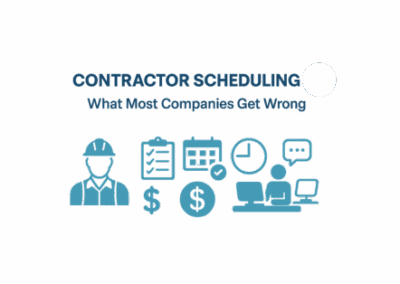What is fatigue?
Fatigue risk management is a must for those industries that work with 24/7 shifts. We all know the feeling of being tired at work. and how difficult it can make your day. Broadly, we can describe fatigue as “a feeling of weariness, tiredness or lack of energy”. However, it can be a lot more dangerous than this as it brings about a state of impairment, which compromises a worker’s physical, mental, and emotional tolerance. According to the Centers for Disease Control and Prevention, in workplace settings, it is commonly associated with nonstandard schedules, such as night shift work and extended work hours, which disrupt or shorten sleep.
Let’s first look at some fatigue facts:
- US businesses lose more than $100 billion per year to fatigue-related absenteeism and reduced productivity (Journal of Occupational and Environmental Medicine).
- Workers with sleep problems are 1.62 times more likely to get injured than workers with no sleep issues(Shiftboard).
- Fatigued workers lose 5.6 hours of productive time per week (Shiftboard)
What causes fatigue?
Obviously, your first reaction to this question would be to assume lack of sleep is the answer. However, fatigue can also because caused by other workplace factors such as:

- Stress
- Physically or mentally demanding tasks
- Repetitive tasks
- Shift work – in particular night shifts
- Long hours
- Not enough breaks
- Unsafe working conditions
- Hot work environment
- Poor lighting
Why is fatigue risk management so important?
In these 24/7 shift workplaces, fatigue is commonplace amongst its workers. Here’s why fatigue risk management is so important:
AFFECT EMPLOYEES WORK
Fatigue will affect employees’ alertness and ability to perform their daily tasks safely. It makes even the easiest of tasks difficult and workers will lose concentration. With this, comes lower productivity levels. Hiring more staff may then be required to ensure the necessary work gets done. It also means less work gets done, which in turn affects your bottom line.
EMPLOYEE SAFETY
Did you know a fatigued employee increases your workplace’s risk of serious safety incidents? As fatigue slows down a person’s reaction times and reduces their attention level, mistakes are commonplace. Impaired judgment makes simple tasks more challenging and complex. Fatigue will affect a person’s ability to make safe decisions leading to a risk of injury and accidents. A review by Uehli in 2014 found that employees with sleep problems have a 1.62 times higher risk of injury than workers without sleep problems. The study also estimates that sleep problems contribute to about 13% of work injuries.
OVERALL EMPLOYEE WELLBEING
Not only will fatigue affect the physical wellbeing of a worker but also their emotional state. Fatigue carries the risk of affecting a person’s mood and behavior at work. A combination of lack of sleep and mental exhaustion leads to irritability. This leads to disagreements and conflicts amongst workers. When tensions are high amongst workers it will have a considerable effect on the team’s performance and safety. For example, workers mightn’t be aware of safety concerns affecting their team if tension exists between them. As well as this, mental exhaustion often leads to employee burnout which brings about absenteeism or extended sick leave from the job.
How to implement fatigue risk management
When your organization operates within the 24/7 shift industry it is crucial to have a Fatigue Risk Management System in place for the safety of everyone. This can be implemented as part of your overall Health and Safety Program so you should recruit the help of your Health and Safety Committee in putting this together. A lot of 24/7 shift organizations will be required by law to have an industry-specific Fatigue Risk Management System. However, it is recommended to have a company-specific system prepared which encompasses the context of your own workplace, as all workplaces are different.
According to SafeStart, your Fatigue Risk Management system should include:

- A Fatigue Management policy
- Risk assessments of the areas/tasks within the organisation. Follow this with controls and action plans to mitigate those risks
- Fatigue reporting system for employees
- Process for fatigue incident investigations
- Fatigue management training and education for employees, managers and families
- An audit of the Fatigue Risk Management System that delivers corrective actions
- Sleep Disorder Management
Other Fatigue Risk Management practises
Effective employee scheduling:
Ensure you have enough staff working all shifts and there is a balanced workload between them. Understaffing will lead to reduced productivity and a heavier workload on your team. When creating shifts, take employees’ sleep needs into consideration. Ensure that workers are getting adequate consecutive days off and breaks between their 24-hour shifts. If you need some assistance with creating complicating shifts, consider companies like Celayix, who use rules-based AI software to create schedules in minutes. Keep the schedule consistent and give it to your workers well in advance. Consistent shifts make it easier for workers to develop a healthier sleep pattern.
Optimize the ergonomics of your workplace:
Bad lighting and hot temperatures can increase fatigue amongst employees. Consider the type of work being done, and ensure that the temperature, lighting, and ergonomics of the workplace are all suitable. For example, remove all obvious safety hazards such as wires that workers could trip on if they aren’t paying attention. Alert employees to any dangerous machinery or areas in the workplace by having appropriate visible signage on them.
Change up tasks:
This may not always be possible but is good for reducing repetitive tasks. Try introducing rotating tasks which can lead to reducing boredom and time spent on tedious tasks.
Equip your teams:

Your workers need to be able to recognize fatigue. Try putting up some signage around the workplace so they can recognize the symptoms of fatigue. They should also be aware of the risks of fatigue and how they can develop healthy sleep habits. You should promote the importance of exercise for mental health also.
Employee Assistance Programs:
Employee assistance programs are a proven method of improving employees’ well-being. When your workers are working these irregular hours it takes a toll on their work-life balance. Having an employee assistance program in place means your teams will have a safe space to speak to someone about it.
Prevention is the best strategy to alleviate workplace-related fatigue. Continue to monitor your workers and look out for the signs. Fatigue Risk Management is so important for the health and safety of your workers. Additionally, it improves productivity and increases your bottom line. A Fatigue Risk Management System will reduce accidents and injuries in the workplace. Moreover, it will keep your teams happy and healthy.




